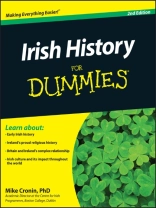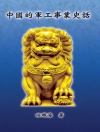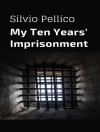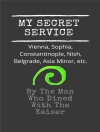From Norman invaders, religious wars–and the struggle for
independence–the fascinating, turbulent history of a tortured
nation and its gifted people
When Shakespeare referred to England as a ‘jewel set in a silver
sea, ‘ he could just as well have been speaking of Ireland. Not only
has its luminous green landscape been the backdrop for bloody
Catholic/Protestant conflict and a devastating famine, Ireland’s
great voices–like Joyce and Yeats–are now indelibly
part of world literature. In Irish History For Dummies,
readers will not only get a bird’s-eye view of key historical
events (Ten Turning Points) but, also, a detailed,
chapter-by-chapter timeline of Irish history beginning with the
first Stone Age farmers to the recent rise and fall of the Celtic
tiger economy.
In the informal, friendly For Dummies style, the book
details historic highs like building an Irish Free State in the
1920s–and devastating lows (including the Troubles in the
’60s and ’70s), as well as key figures (like MP Charles Parnell and
President Eamon de Valera) central to the cause of Irish
nationalism. The book also details historic artifacts, offbeat
places, and little-known facts key to the life of Ireland past and
present.
* Includes Ten Major Documents–including the Confession of
St. Patrick, The Book of Kells, the Proclamation of the Irish
Republic, and Ulysses
* Lists Ten Things the Irish Have Given the World–including
Irish coffee, U.S. Presidents, the submarine, shorthand writing,
and the hypodermic syringe
* Details Ten Great Irish Places to Visit–including Cobh,
Irish National Stud and Museum, Giants Causeway, and Derry
* Includes an online cheat sheet that gives readers a robust and
expanded quick reference guide to relevant dates and historical
figures
* Includes a Who’s Who in Irish History section on
dummies.com
With a light-hearted touch, this informative guide sheds light
on how this ancient land has survived wars, invasions, uprisings,
and emigration to forge a unique nation, renowned the world over
for its superb literature, music, and indomitable spirit.
قائمة المحتويات
Introduction 1
Part I: The Snakes Leave Ireland 9
Chapter 1: No Man Is an Ireland 11
Chapter 2: The First People Arrive 21
Chapter 3: The Early Irish Kings 35
Chapter 4: Snakes Alive! Christianity Comes to Ireland 45
Part II: The Normans Are Coming! The Twelfth and Thirteenth Centuries 63
Chapter 5: The Vikings Arrive First 65
Chapter 6: Irish vs Norman Invaders But Who’s in Charge? 79
Chapter 7: Boy Meets Gael: The Norman-Irish Alliance 93
Part III: The Invading English Kings: The Fourteenth and Fifteenth Centuries 109
Chapter 8: The Scottish-Irish Rebellion and Its Aftermath 111
Chapter 9: From Richard II to Henry IV: More Turmoil in Ireland 127
Chapter 10: Family Feuds I: The Wars of the Roses 139
Part IV: Religious Wars and Family Feuds: The Sixteenth and Seventeenth Centuries 155
Chapter 11: Popes Versus Archbishops: The Reformation and Ireland 157
Chapter 12: Religious Roundabouts and Irish Rebellion 169
Chapter 13: James I and the Plantations; Charles I and Chaos 185
Chapter 14: Family Feuds II and III: The English Civil War, then William and James 201
Part V: Catholic and Protestant: The Eighteenth and Nineteenth Centuries 217
Chapter 15: Going Irish? Grattan’s Parliament and Wolfe Tone’s Rebellion 219
Chapter 16: Going British: The Act of Union 231
Chapter 17: Three Strikes for Irish Independence: O’Connell, Davis, and Mitchel 247
Chapter 18: The Great Hunger and the Land War 263
Chapter 19: The Fight Over Home Rule 283
Part VI: Divided in Two: Life from the 1880s 299
Chapter 20: Balls and Books in Irish: The Cultural Revival 301
Chapter 21: Fighting Against Britain: The Revolution 315
Chapter 22: One Land, Two Systems: Partition 329
Chapter 23: Troubles Begin Again And Maybe Finish 347
Part VII: The Part of Tens 369
Chapter 24: Ten Top Turning Points 371
Chapter 25: Ten Major Documents 375
Chapter 26: Ten Things the Irish Have Given the World 379
Chapter 27: Ten Great Irish Places to Visit 385
Chapter 28: Ten Irish People Who Should Be Better Known 391
Index 397
عن المؤلف
Mike Cronin, Ph D, is the Academic Director at the Centre for Irish Programmes, Boston College, Dublin. Mike has taught history to university students for close to 20 years, and he has written five books on Irish history.












